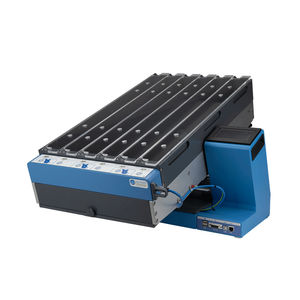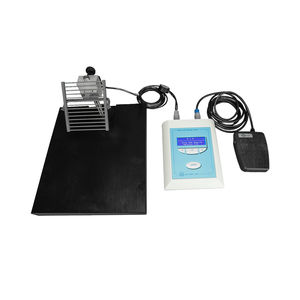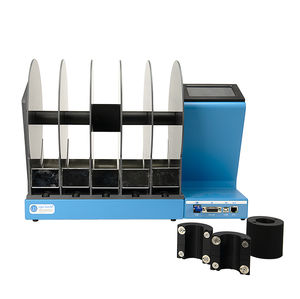
Digital rotarod 47650-327for ratsfor micewith touch screen

Add to favorites
Compare this product
Characteristics
- Technology
- digital
- Animal type
- for mice, for rats
- Other characteristics
- with touch screen
Description
The complex wheel add-on for mouse and rat RotaRod introduces an additional complexity element for the animal to be tested. Thanks to the asymmetrical and adjustable bars it increases the test sensitivity and add a higher involvement of motor cortex and hippocampus, as compared to the classic rotarod test.
The Ugo Basile RotaRod is the 1st and original, invented after the Dunham and Miya method (1957) and today has more than 6,200 citations in the literature.
The Complex Wheel was developed in conjunction with Prof. Michele Bellesi and Prof. Luisa de Vivo from the University of Camerino (Italy).
The complex wheel is designed in a way that the animal does not have a uniform surface to walk on but rather a number of horizontal bars (rungs) that can be changed in number and positioned in a symmetrical or uneven position to vary the test complexity. This provides a different task to the animals, which now don’t have to walk on a small rod, but rather on an accelerating wheel with irregular bars pattern.
Features & Benefits
The complex wheels for Mouse and Rat RotaRod include removable bars, which allow for complete control of the task difficulty and therefore of the engagement of motor cortex and hippocampus, in addition to the increase of the test sensitivity.
VIDEO
Catalogs
No catalogs are available for this product.
See all of Ugo Basile‘s catalogsRelated Searches
- SpO2 monitor
- Activity meter
- Animal research cage
- Modular animal research cage
- Biosignal acquisition system
- Experiment maze
- Induction chamber
- Mice experiment maze
- Rat experiment maze
- Animal research experiment maze
- Rodent animal research cage
- Laboratory stereotactic frame
- Rodent laboratory stereotactic frame
- Bench-top laboratory stereotactic frame
- Rodent induction chamber
- Analgesia meter
- Operant behavior system
- Mice animal research cage
- Anesthesia induction chamber
- Research biosignal acquisition system
*Prices are pre-tax. They exclude delivery charges and customs duties and do not include additional charges for installation or activation options. Prices are indicative only and may vary by country, with changes to the cost of raw materials and exchange rates.






